Seeing heat?
Losing heat
When a hot object cools down we say it loses energy. It's thermal energy is lower the colder it gets.
The most familiar way to lose thermal energy is by contact with something colder.
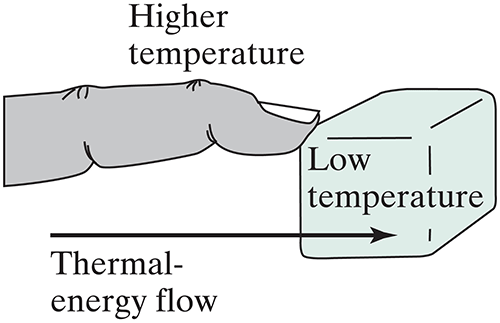
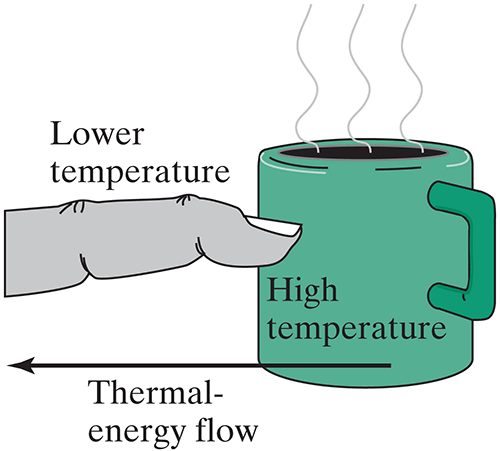
But there is a second way to lose energy: What form of energy is coming from the hot kiln that you can see?
Electro-magnetic waves
Whenever you shake (accelerate) some charged particles you generate electro-magnetic waves.
Electro-magnetic waves are just another name for light
Talking about waves

Wavelength = distance between crests in [m] (or [m / (wave)])
Wavespeed The speed that wave crests are moving in [m/s]
Sound: pressure waves in air travel at ~750 mi/hr = 343.2 m/s
Light: E-M waves travel at $2.998 \times 10^8$ m/s
[Lightning strikes and airplane]
Amplitude = maximum distance away from 'undisturbed' (yellow line) - units [m]
Frequency and wavelength
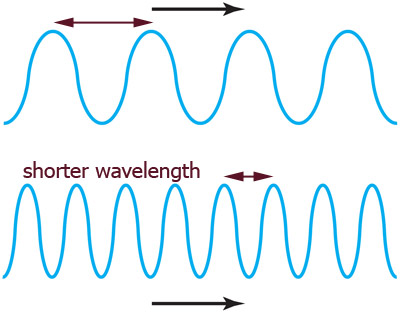 Frequency =
# of waves passing a point in a time interval - [1/s] or [(cycles)/sec] or
[Herz] =[Hz]
Frequency =
# of waves passing a point in a time interval - [1/s] or [(cycles)/sec] or
[Herz] =[Hz]
What happens to the wavelength if you shake a slinky with a higher frequency??
It turns out that frequency$\equiv f$ and wavelength$\equiv \lambda$ are related to the speed$\equiv c$ of a wave like this: $$f\lambda=c$$
If all other things (amplitude and speed) are equal do you think a higher frequency wave has more or less energy than a low frequency wave??
Imagine a boat tied to a dock being tossed up and down by these two waves. Which wave is doing more work against gravity by lifting the boat more often??
Going back to heat, do you think charged atoms are shaking slower or faster when they are heated to a higher temperature?
Electromagnetic spectrum
Higher temperature = faster shaking = higher frequency waves.
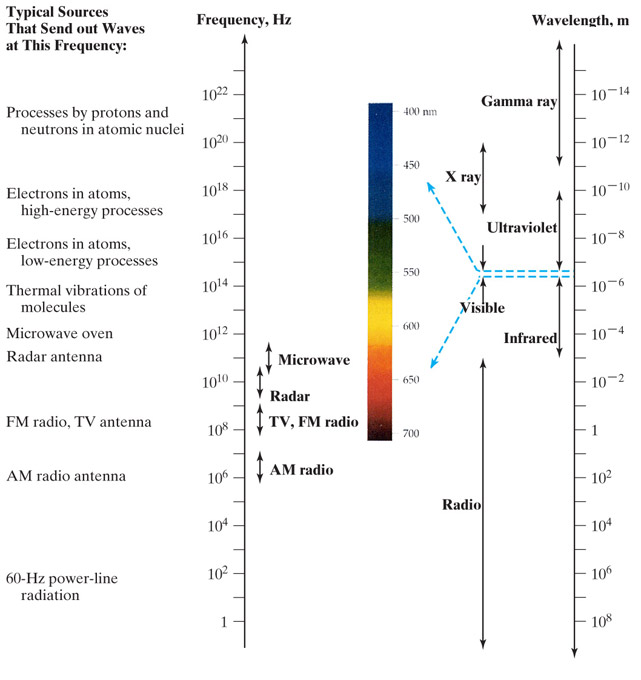
Blackbody radiation
Our sun has a surface temperature of ~5400 C~5700 K.
A Tungsten lightbulb filament has a melting temperature of ~3700 K.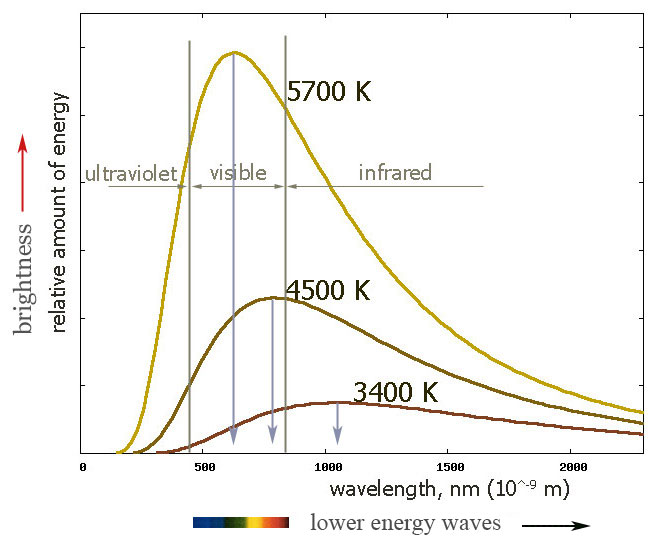
The temperature of a glowing object is closely related to its apparent color.
Do we glow too?
Do we "glow" too, just like the sun, just with a peak around 300 K?
Yes. this corresponds to the infrared part of the spectrum. Special sensors can sense IR, and then transpose it up into the visible range for us to see.
You can also use this technology to look for heat leaks: Here are two sets of windows on a 6th St house on the same cold night:
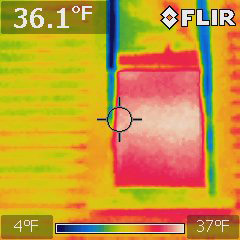 Older window |
 Replacement, highly insulated window |
|---|
Also notice the difference of glass' transparency when viewed in the IR and in the optical range.
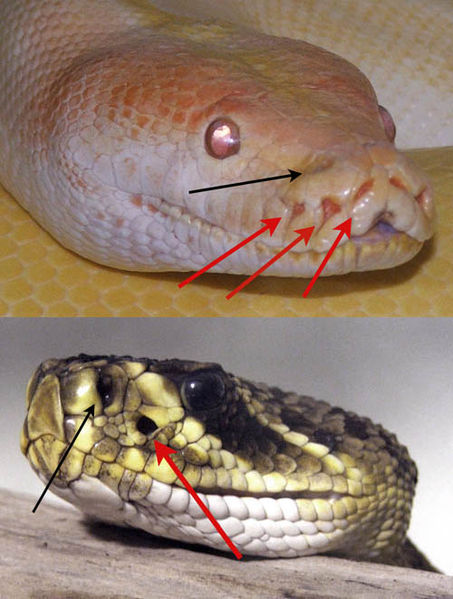
Some snakes have "pit organs" that can sense IR radiation.
Suggested exercises
Conceptual exercises: Chapter 9: 1, 4, 7, 8, 12, 15, 16
Problems: Chapter 9: 1, 3, 6